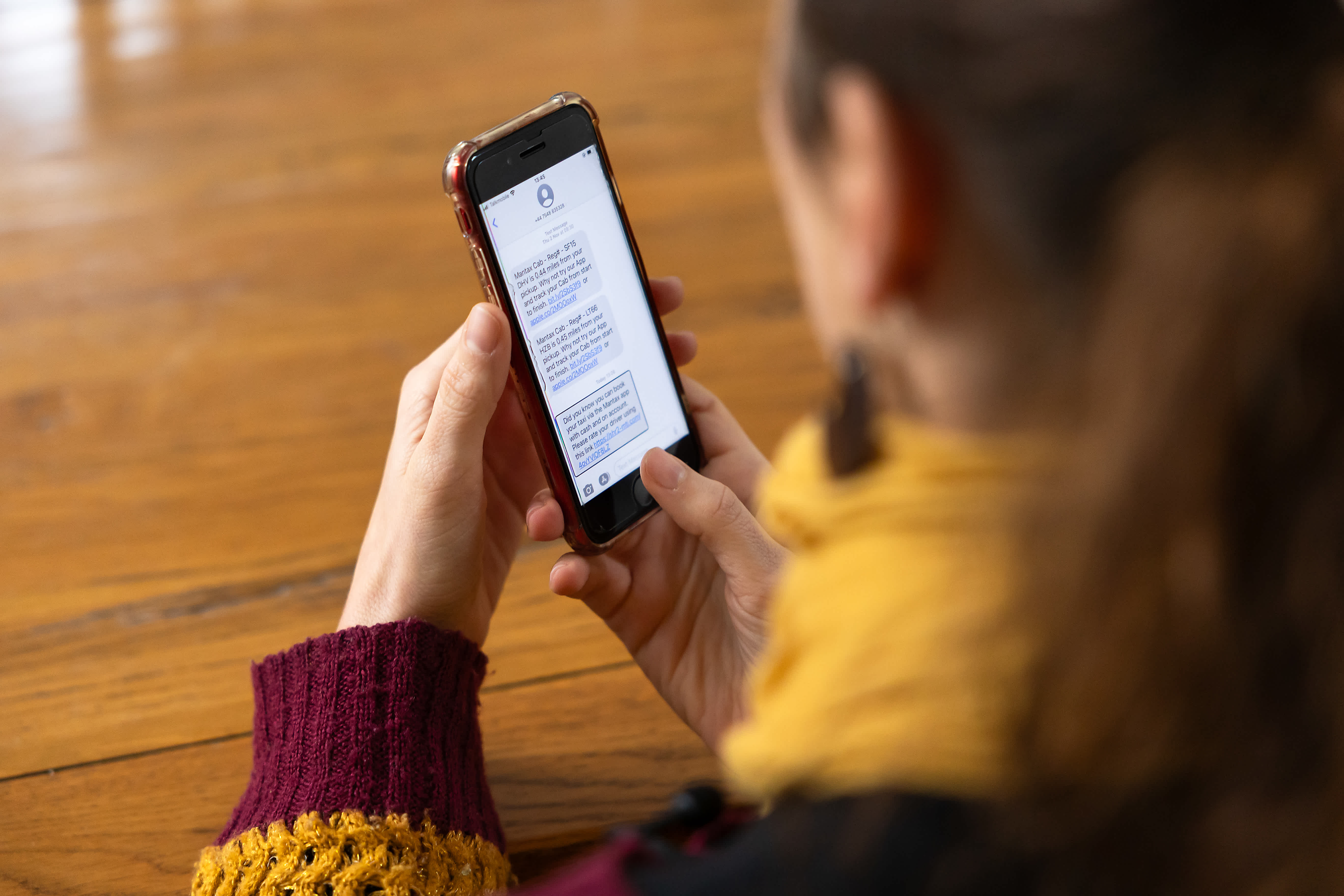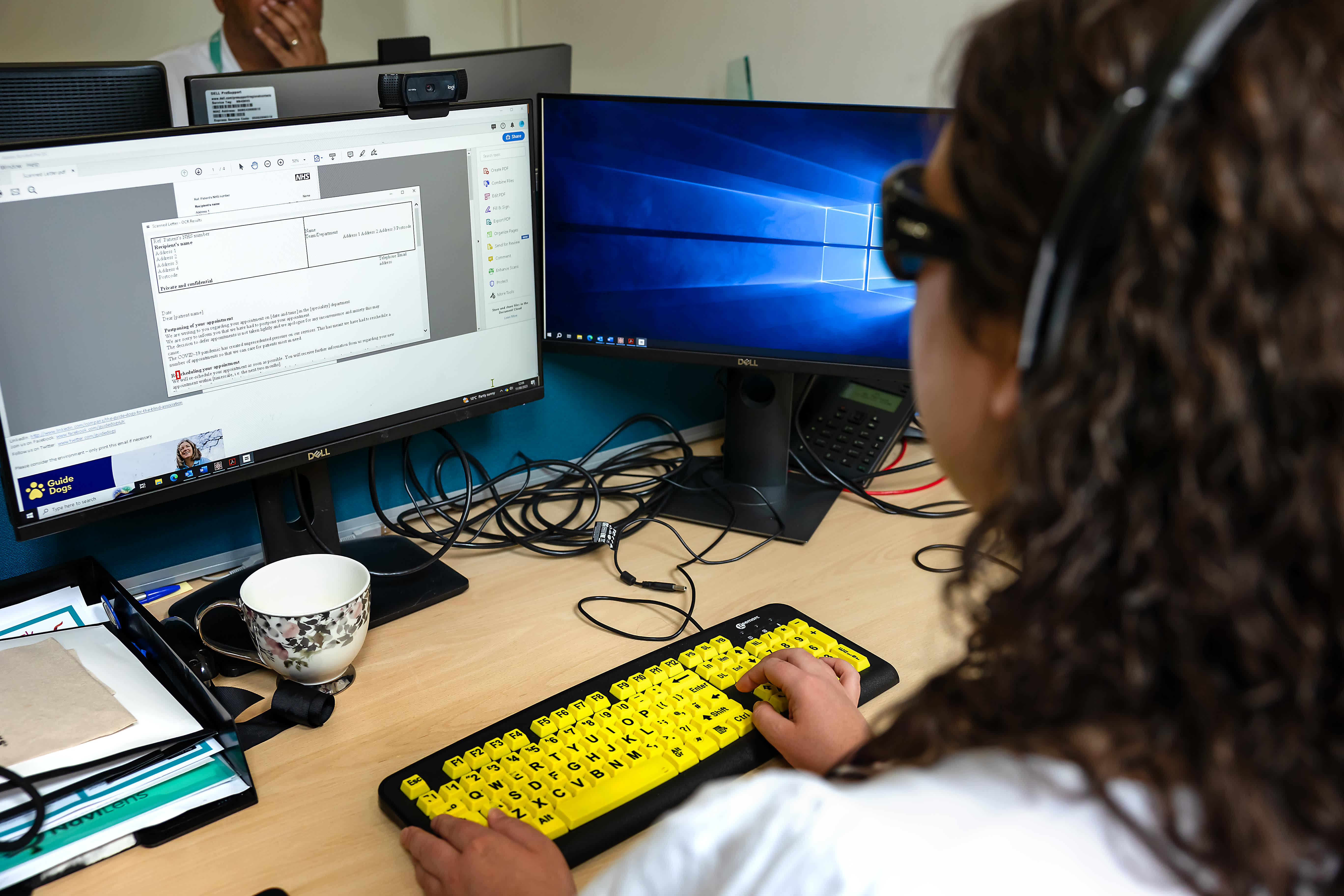The new Matter smart home standard will make it easier for people with a vision impairment to choose accessible smart home products that can all be connected together via one system.
Matter is a type of 'language' which allows different smart home products to talk to each other. Even if all your devices come from different brands, if they're compliant with Matter you can seamlessly connect and use them together.
As Matter is still in its early stages, we don't fully understand how helpful it will be yet. It might be worth waiting to invest in Matter-compatible products until there's more information on its benefits.
Smart technology – speakers like Amazon Echo, light switches and doorbells – is changing the way we live, making everyday tasks much easier and faster. A smart home also means a home that is more comfortable and accessible for people with sight loss - for example, smart thermostats can let you monitor your energy usage and set the temperature for your home from your phone.
Sometimes though, having devices from multiple different manufacturers can mean they don’t seem to be able to work together. The new Matter smart home standard will soon make it easier for people with vision impairment to choose and use accessible smart home products such as thermostats, lights, speakers, sensors, plugs, switches and locks.
Matter is a new open standard from tech companies including Amazon, Google and Apple that aims to improve this situation by letting smart home apps and devices communicate freely with each other, even if you have a mixture of devices from different brands. Essentially, it is a new type of ‘language’ that helps them talk to each other.
Let’s look at what it is, how it works and why it has so much potential.
Will Matter improve smart home accessibility?
In short, yes. But we need to dig into the ‘how’ to help explain the ‘why’.
At the moment, you may have several smart devices in your home; a voice-activated speaker in the kitchen, a smart TV, a WiFi-controlled thermostat and an e-reader upstairs on the bedside table. But there’s one communication difficulty between all that tech: unless each device is made by the same company – like Amazon, Apple or Google – they don’t communicate very well with each other.
So, if you buy a smart doorbell from Amazon, you may have to add another device, with yet another password, to your iPhone or iPad to control it. Or a software update in Apple Home Hub means you also have to reinstall the app for your Philips smart lights to turn them on.
This can be particularly frustrating if you have a vision impairment. If something goes wrong with one device, it could undo the hours of hard work you’ve put into creating an accessible home. Plus, the type of products you buy (or are given as gifts) may be limited.
For example, if you already have a Google Nest speaker, it makes sense to invest in compatible Google products. But you may feel the brand doesn’t have the best design for you and your needs.
Matter is designed to get rid of all these issues by helping different devices made by different companies communicate seamlessly with each other. The result should be an even smarter smart home.
With Matter, you are no longer restricted in your choice of smart home products by a particular brand or vendor. This means that should you experience an accessibility challenge with your smart home system, you are free to switch to a different control app at any time.
How does Matter work?
In a nutshell, Matter is a universal language that any device can use on any platform to talk to any other device. So, you could ask Siri or Alexa to switch off your Samsung TV on the way to bed. And if you turn on the lights with the Apple Home app on an iPhone, your partner can turn them off using the Google Home app on their Android phone.
Matter is also a local technology, which means it doesn’t need the internet to run your gadgets. Every device in your home will be able to talk directly to one another – and much faster. When you press a smart light switch that uses Matter, it doesn’t have to connect to the internet, sending a signal all the way through space and back, just to turn on a light bulb inches away.
But Matter is not like Alexa or Siri. It’s not a voice assistant (VA) or a platform, and doesn’t have its own app; it’s just the language smart devices use to talk to each other. You still need to choose the VA or smart home hub, such as Ikea Dirigera, to control all your devices but you could use different VAs to operate the same device.
What devices will work with Matter?
Matter only launched in October 2022, so the range of Matter devices is currently quite limited. But it will expand over the months and years as more manufacturers get on board. So far, Matter-compatible devices include:
light switches and light bulbs
locks
thermostats
blinds
air conditioners and air purifiers
fridges
motion sensors
smoke alarms
home security cameras
garage door sensors
TVs and streaming video players
New Matter smart home devices are beginning to appear. Google, Amazon, Apple, Samsung and Ikea have begun making their smart home hubs and apps ready for controlling Matter products. However, Matter smart home products are still hard to find in the UK.
How easy is it to set up Matter smart home devices?
Pretty easy! Whenever you buy a new bit of kit, check it has the Matter logo on it. This shows you can easily connect it to other Matter-compatible devices, apps, virtual assistants and platforms.
Checking if a device you want to purchase supports Matter can require some research. Sometimes this information may be easily available and sometimes you'll need to take a closer look at the item description to understand how to connect it.
When you get it home, open the manufacturer’s app or your existing smart home app, like Alexa or Google Home. Each device comes with a QR code that you scan in, then the app will guide you through how to set up your new device and connect it to the rest of your smart home in seconds.
Some devices may be automatically detected by your smart home app when you first turn them on, making the whole set up process even easier for people who are visually impaired.
Is Matter safe and secure?
The creators of Matter, the Connectivity Standards Alliance (CSA), say Matter is a very secure system, because all Matter devices come with an individual set-up code; the QR code you scan in. When you install your new device, it connects to the Matter network using this set-up code like an individual password.
Once the device is authenticated by a Matter controller – a more advanced device like Amazon Echo or Apple Home Pod – a secure connection is created and all communication between them is now encrypted. This encryption makes it virtually impossible for them to be hacked.
However, some tech experts say we won’t know exactly how safe a Matter smart home is until it has been up and running for a while. If you’re concerned about security, you may want to wait until Matter has been fully tried and tested in the real world.
Is it worth investing in Matter if I’m visually impaired?
If your existing gadgets are Matter-compatible devices, you don’t need to do anything. For example, if you bought a new smart speaker, thermostat or light bulb in 2022, it should already have Matter built in – check with the manufacturer if you’re not sure.
The CSA says software updates will also allow any previous devices you have in your home to run on Matter. As for much older devices, they say, “Matter is designed to play nicely with them too” but it’s not clear exactly what this looks like in reality.
Matter may not be compatible with every device in your home, either. If you wanted to build a complete smart home security system, you’d probably want cameras, motion sensors and alarms all to work together. But alarms often need specific UL approval (a benchmark in security technology), which could rule them out of using Matter.
It may be worth waiting before buying any new kit to find out how helpful Matter really is for you but Matter smart home products are certainly worth considering when they become more mainstream.
Want to learn more about smart home technology?
Visit our Technology pages to learn more about how smart home devices and other products can help you live independently.


